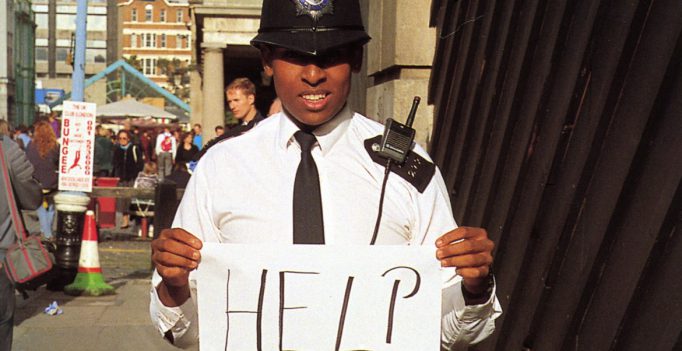28 March-17 June 2012, Whitechapel, London, ended
Gillian Wearing
If form is like a face looking at you then Gillian Wearing’s exhibition was able to communicate in a limited fashion on societal relations and human interaction. In the context of quasi socially motivated art her use of the camera and video camera apparatuses may possibly have hindered the reception of her work which is nevertheless interesting to view.
Abstracted gazes
We are all witnesses to each others existence and so by this act create a collective paradigmatic vision channeled via social relativisms by which one encodes or decodes the collective subjectivity, it is these inputs, outputs and signal transmissions through which reality is experienced and defined. And it is within this third space that one navigates the intra-spatial experiences that Wearing’s practice is concerned with. This exhibition in part seeks to recreate that vital agency that occurs on the scopic plateau by showing isolated fragments of time which exist for themselves.
Eye of the others
Finding a language in art is a good thing but if one then relies on it heavily its underpinning falls over. There are a few simple strategies employed which do not necessarily expound the problem cerebrally but visually and have a limited shelf life. For example the use of visual/auditory incongruity – essentially lip synching/dubbing – the voice of a converse type social actors over those of a relative opposite, young/old etc. Another such is ‘Interview/Documentary style’ treatment. The danger that by trying to get at the truth the converse occurs the document becomes if not a perversion of reality then certainly a lower order manifestation, for example on what criteria was material edited, questions asked and decisions made all which affect any outcome?
Intrasubjective traversal
Rather than concrete logic at the heart of the work perhaps performance and documentation appear as the main keys and the camera, only the way, guided by emotive criterion. It could even be argued that we are just witnessing the artist’s fascination with people. Documenting social connections and dislocations is all well and good but quickly becomes tautological. The simple strategy of, I will show you something and you will infer from this some deeper meaning is inherently simplistic one would always experience some thing by ones natural cathexis. The everyday reality of buses, strangers, the intervals between people on the streets are essentially meaningless voids of otherness. Does putting them in a darkened room or on white walls really change that?
Is this any good then?
The simple strategy and logic was at times irritating, repetitive and too simple. Notwithstanding however some of the work appears original and is nonetheless captivating in a very banal kind of way. It has a one dimensional scope and does not branch out from that. The exhibition is by its nature reflexive and in places tautological. I mean do we really get to see the people as they truly are. The level of intervention renders this possibility less and less likely. There was also a sort of media banality to it, like the ‘Up Series’ and didn’t well known energy provider win awards for their animations with overdubbing techniques?
OUTLINE
Photography, Film, Media, Sculpture through which is explored human relations and subjectivity.
www.whitechapelgallery.org/exhibitions/gillian-wearing
written by: Colin Humphrey
